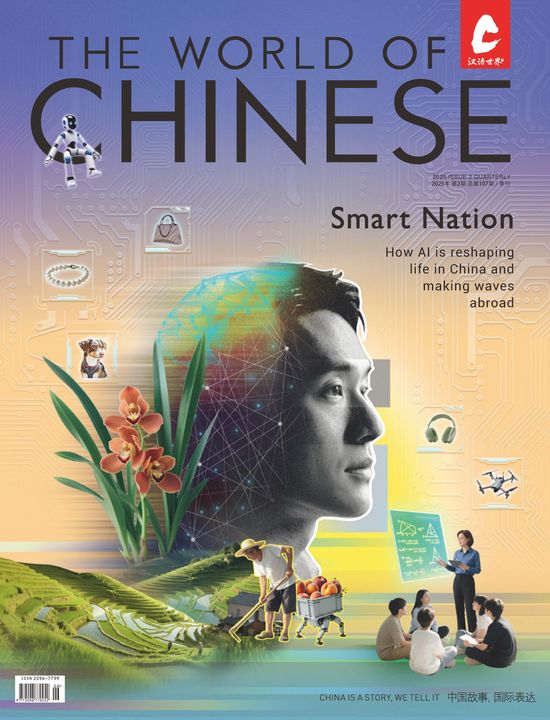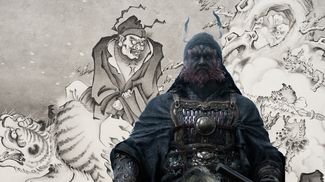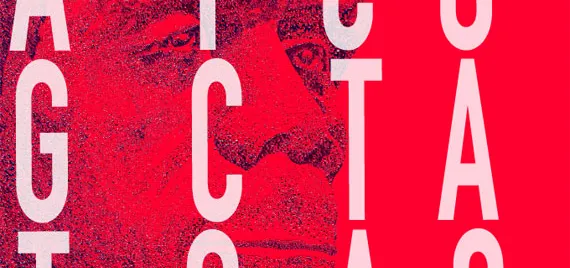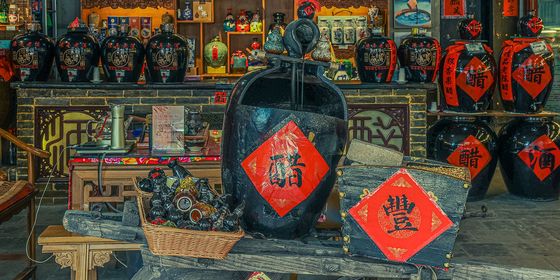A nation coping with a dying theory
While waves were sent thrashing through the intellectual world in 1987 as DNA evidence hailed a woman living 200,000 years ago in Africa as the earliest common ancestor to all modern humans, China’s leading scientists fervently waved the red flag and rejected the findings in Nature as being little more than preposterous. They held up the theory that an archaic form of human, the “Peking man” (北京猿人 Běijīng yuánrén), was the true ancestor of the modern Chinese, with radicals going so far as to claim that China was the cradle of humanity.
Over the next thirty 30 years, as the model of a common African origin gained momentum with growing genetic and archaeological evidence, the theory evolved into a well-tread narrative of human evolution, depicting an early form of modern humans emerging out of Africa around 60,000 years ago. The scientific community rejected the competing theory that supported independent evolution in different parts of the world. But in China, the revelation barely rippled with a defiant nation that continued to teach in its history and text books that the Peking man was the real deal, and the prevailing theory of evolution failed to permeate the realm of public conscience.
The Peking man in question—a Homo erectus or upright man that lived 750,000 years ago—was discovered in Zhoukoudian (周口店, now a UNESCO World Heritage site), southwest Beijing in 1929. At the time they were the oldest fossils of man known, fanning flames for theories that all humans originated in China.
These believers were at least right about one point: common originality. “Based on evolutionary theory, all modern humans have to share a common ancestor at some point in the past”, says Dr. Mark Stoneking, of the Max Planck Institute for Evolutionary Anthropology, “The evidence for this is extremely strong from all fields of anthropology and genetics. The controversy is over how far back in the past this common ancestor is.”
Indeed, apart from the occasional loon, what most leading scientists, including the Chinese, can now agree on is that around two million years ago during the Pleistocene era (2.6 million-11,700 years ago), primates in Africa evolved into Homo erectus on the African continent. This species was able to cover greater distances due to its upright form, and with climate conditions permitting, a sub-population of this species successfully migrated out of Africa in an event known as Out of Africa I, spreading to Asia and other parts of the world, giving rise to populations such as the Peking man.
So what happened to these archaic forms that occupied Asia? Those in support of this view back the Multiregional model of Evolution, a theory that has largely been rejected by the international scientific community. Continuous descent from Peking man, at least, “is very unlikely from fossil evidence, and perhaps even more unlikely from the totality of the genetic evidence,” according to Professor Chris Stringer of the Natural History Museum in London. “Classic multiregionalists model from late last century proposed an evolutionary continuity that lasts at least a million years in each region, which would result in a gradual transformation in each area to modern people of today—from the Neanderthals to modern Europeans, from Peking Man to modern Chinese.” For Professor Stringer, the picture is clear, “In my view there is only one region where we can observe such a transformation, and that is in Africa.”
That is to say, a second migration out of Africa occurred around 60,000 years ago, known as the Recent Out of Africa Hypothesis hypothesis (ROAH) by a more evolved species. This new species, an early form of Homo sapiens, dispersed around the world, replacing archaic forms like the Homo erectus, giving rise to the modern human population today.
There is nearly no doubt that modern humans came out of Africa, “The evidence in favor of an African origin about 200,000 years ago for modern humans is very robust,” says Dr. Rosalind Harding, Oxford University Lecturer in Biological Anthropology. Some of this comes from studies on mitochondrial DNA (mtDNA), which is only passed along the maternal line, and can therefore be used to trace genetic lineages. The work that began in the 1970s by Dr. Stoneking and colleagues has demonstrated that all humans are traceable to “Mitochondrial Eve”, the woman living 200,000 years ago in Africa.
The Homo erectus in Asia is believed to have gone extinct—they either died out or were driven to extinction by incoming species, although no one knows when and where this happened.
On the other hand, Multiregionalists reject that their lineage was cut short in this way, believing that it persists until today. Champions of this latter school of thought, notably the paleontologist Professor Wu Xinzhi of the Chinese Academy of Science, have recently advocated a view whereby populations of Homo erectus in Africa, Asia, and Europe continued to exchange DNA through interbreeding, while under going strong natural selection in their own regions. In this way, archaic populations developed “regional” as well as “common” features, creating what Professor Wu refers to as a “mosaic of morphological features”.
According to Wu, distinct shovel shaped upper incisors and flat upper faces seen in Peking man and other archaic Chinese fossils are only identifiable as “complex” in modern Chinese. For Professor Stringer however, this line of argument is unconvincing: “I would argue that the distinctive features of Africans, Europeans, Asians, and Australasians evolved only after the development of our shared modern features, i.e. within the last 100,000 years”..

And while academics in China rage against the grain, the Chinese public is less than perturbed by stirrings in the scientific realm. Ask the average Chinese person who they evolved from, and the likely answer is “Peking man”. Suggest an African ancestor in response, and whole gamut of reactions to this bizarre notion is likely to surface. Ms. Zhang Yanfang, a 67-year-old Beijinger and retired office manager, on learning of the Africa theory, replied that she was not even aware such a hypothesis existed, “I’ve never heard of such a thing,” Zhang replied, saying that she grew up learning, like every other Chinese person, that she descended from the Peking man. “I think it’s quite unlikely that we are related to Africans; the difference is too great in every respect—including that of race.”
While general ignorance might fuel popular skepticism towards ROAH, for many the disbelief in an African origin lies in the notion that the Chinese, with its unique and illustrious history, the longest continuing civilization in the world, and the creator of some of the greatest inventions ever, could fundamentally be “non-Chinese” in any way.
Professor Frank Dikötter, Chair Professor of Humanities at the University of Hong Kong and author of The Discourse of Race in Modern China, believes that intellectualism can be strongly influenced by a cultural context, noting a similar resistance in the West to the multiple origins theory in the 19th century, “Monogenesis until recently was a view with its own cultural background. Despite the fact that Charles Darwin and others were talking in the name of science, it was very clear that Christianity and the idea of Adam and Eve provided a strong setting.” In China, views opposing this began emerging at the end of the 19th Century, when thinkers, likely influenced by strong Confucianism, says Professor Dikötter, “insisted that Africans and Europeans came from one single origin, but that the Chinese were completely different.” The discovery at Zhoukoudian several decades later reinforced this view: “Chinese scientists took it to be proof that China is one long line of uninterrupted descent.”
China has a long history of ancestor worship, with the belief that the legendary Yellow Emperor (黄帝) is the ancestor of all Chinese people.
This conceptuality of a distinct racial lineage took particular form during the Qing dynasty, where tracing patrilineal lineages of descent to form long genialities became a popular practice. “Clans would compile ancestral lines to show that an uninterrupted line of decent existed,” Professor Dikötter says. “This certainly combined with newer evolutionary ideas about race at the end of the 19th century.” Professor Dikötter believes that this strong culture is one that is still present today, ”Science never really operates outside of social, cultural, and political contexts; we might wish to believe it is completely objective and blind, but it is not.”
Stripped of cultural and historical connotations, the issue of race may be more than a mere reverence for one’s own. There exists a widely carried unfavorable perception of Africa and the African people. Both Professor Dikötter and Professor Sam Crane, Chair and Professor of Political Science at Williams College, Massachusetts, agree that these views have a part to play in the debate. Such sentiments were demonstrably brought to the fore in 2009 when Lou Jing, a 20 year old mixed-race Shanghai woman whose father is of African-American descent, appeared on the TV talent contest Go! Oriental Angel. After speaking of what it meant to be Chinese, she almost immediately became a target of online abuse and slurs centered on the color of her skin. Many netizens were insulted that she considered herself Chinese at all, exposing the realities of identity and racial prejudices in modern day China.
While the notions of race may be a more recent phenomenon, ideas about national identity are deeply rooted in history. Dr. Lukas Nickel, Reader in Chinese Art History and Archaeology at the School of Oriental and African Studies, University of London, believes that ideas of national identity are important in this debate. “China is one state with a long and independent heritage, and the first emperor of China was enormously important in constructing a nation and a unified people.”. The first emperor Qin Shi Huang (259 B.C.-210 B.C.), a foreboding military strategist and policy maker conquered individual kingdoms and unified them into one state, germinating more than 2,000 years of imperial rule.

The Gezidong cave is where the Peking man skulls were first found
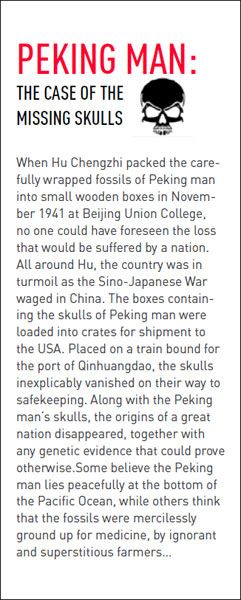
“Before Qin unified China, each country was different and each state had a distinct dialect with only a limited sense of commonality,” says Dr. Nickel. He adopted what Dr. Nickel calls “psychological unity measures,” to ensure that China could function as a single unit, where its people felt “crucially different from everyone else.” Qin even gave his people a new name, “The Black-Headed Ones”, standardizing their language, script, laws and customs. While regional dialects can still be very different today, there were enormous differences during that period.
Even the Great Wall of China, commonly believed to be a strategic barrier built by Qin to ward off invaders, was built as a powerful symbol of separation between the Chinese people and others. Dr. Nickel is convinced that Qin helped shape the psyche of a unique population, “and what he has created has persisted and resonated through all of Chinese history.”
While the glowing legacy of the Qin Dynasty (221 B.C.-206 B.C.) may have contributed to a nationalistic psyche, of equal relevance is “The Century of Humiliation” (百年国耻 bǎinián guóchǐ) that China suffered at the hands of foreign forces in the late 19th to early 20th Century. From the Opium War to the Japanese invasion, these events and the political turmoil that ensued brought the country to its knees. Patriotism was introduced through primary school lessons, alongside activities such as raising the national flag. “Patriotic education in China may well contribute to the general skepticism regarding the ‘Out of Africa’ approach to human evolution,” says Professor Sam Crane of Williams University. “Patriotic education focuses critical thinking in a nationalistic direction, which in turn could increase the preference for uniquely ‘Chinese’ answers to all sorts of questions.” Professor Crane also points to the phrase Zhongguo tese (中国特色) which refers to the cultural ‘”specialties,” an array of the good, bad and absurd, that is uniquely made-in-China.
The desire by a nation to see itself as “special” may be relevant, but Professor Crane thinks there’s more to it than cultural egos when it comes to intellectualism: “Perhaps more important in the area of evolution, is a general anxiety among academics regarding the apparent intellectual dominance of “Western” theories and interpretations.” In part, says Professor Crane, “it reflects a broader intellectual aspiration to transform the Chinese experience into more universal theories.”.
Ironically, then perhaps, that the biggest blow to multi-regionalism in recent years has come from a contemporary of Professor Wu’s at Fudan University, who apparently set out to do just the opposite. Professor Jin Li, one of China’s leading geneticists at Fudan’s Research Centre for Contemporary Anthropology, claims his intention was to prove once and for all that the Chinese evolved independently in China. But instead, his results in 2001 turned his own theory on its head and lent substantial support to ROAH. By looking at the Y-chromosome found only in men, Professor Li singled out a genetic mutation that arose in Africa 31,000—79,000 years ago and collected 12,000 DNA samples from 163 different ethnic groups around East Asia. The results were shattering–every single sample contained the maker that originated in Africa.
While consensus holds sway on the basic model of human evolution, the picture is far from assembled. Even the “Out of Africa” narrative is proving to be murkier than first thought. In contrast to a static model of evolution from earlier decades, “human evolution has been shaped as much by dispersal out of Africa many times, and across Eurasia many times, as by isolation within geographic regions,” says Dr. Harding. She attributes these movements to Pleistocene climate changes that permitted dispersal as well as imposed isolation, and thinks that, while species became extinct at the hands of other incoming species, there could also have been reproductively successful mating, allowing for gene flow between species.
So, perhaps there is still a glimmer of hope that the Peking man DNA will be picked up in the gene pool somewhere. While none have yet been detected, archeological findings in 2010 yielded a new species in Siberia, the Denosivan (41,000 years ago), whose DNA is a mixture of different species, of which a significant amount has passed onto modern Australasians. Furthermore, a small fraction of this seems to belong to an archaic human–could this be an Asian Homo erectus, or even Peking man? More complete Denosivan DNA is needed before anything can be inferred, but if it was the case, Australasians, rather than the Chinese, would be its descendants.
Until definitive evidence shows that Asian Homo erectus simply died out, the door of possibility will remain unhinged. While it is “extremely unlikely that ‘Peking man’ evolved into modern Chinese,” says Dr. Stoneking, “it is still possible that when modern humans entered China, around 40,000 years ago, they interbred with Homo erectus in China, and so it is possible that modern Chinese carry some Homo erectus ancestry.”
Not so fast, curtain call, there may be a Peking man amongst us.
